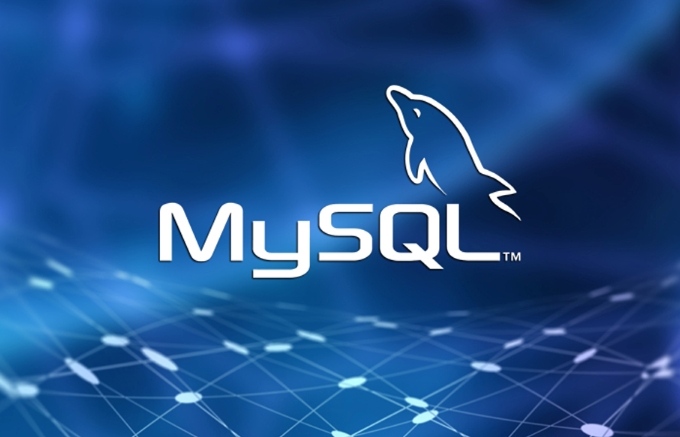Debugging syntax and runtime errors in MySQL queries or procedures
Jul 06, 2025 am 02:25 AMTo troubleshoot MySQL syntax errors and runtime errors, you must first understand the error message and locate the source; 1. Use the editor to highlight the syntax and split complex statements to execute it step by step; 2. Insert marks when debugging stored procedures to clarify the error position; 3. Pay attention to common problems such as spelling errors, symbol omissions, retained words without quotes, variable scope and data type mismatch; 4. Use tools to format the SQL structure to improve readability, and finally solve the problem through segmented testing and logical verification.

Syntax errors and runtime errors are common problems when writing MySQL queries or stored procedures. The key to troubleshooting these errors is to understand the error message, gradually verify the code logic, and master some debugging skills.

Understand the error message and locate the source
The error message returned by MySQL usually tells you where the error occurred and the approximate reason. for example:

- Syntax error : Common prompts such as
You have an error in your SQL syntax; check the manual that corresponds to your MySQL server version. - Runtime errors : such as field does not exist, table does not exist, constraint violations, etc., such as
Unknown column 'xxx' in 'field list'.
Don’t panic when encountering errors, first look at the error type and specific description. Sometimes the wrong position may not be the first line you see, but the bracket is not closed, the keyword is misspelled, or the reserved word is used as the column name is not quoted.
suggestion:

- Highlighting SQL syntax with the editor can help you quickly detect spelling errors.
- Split complex statements into small segments to execute, and narrow the scope of investigation.
Use segmented tests to troubleshoot problems step by step
For longer queries or stored procedures, do not run them all at once. You can first disassemble the entire statement and execute it one by one to see which part of it went wrong.
For example, if you have a SELECT statement with multiple JOINs, you can first execute only the query of the main table, and then gradually add the JOIN conditions and WHERE clauses.
This can also be done when debugging stored procedures:
- Add temporary SELECT or output logs in the process (can be used INTO OUTFILE or write to temporary tables).
- Insert
SELECT 'debug point 1';points in this way to see where the program execution is interrupted.
The advantage of doing this is to know clearly where the error occurs, rather than being helpless in the face of the overall failure.
Pay attention to common and easy-to-missing points and avoid them in advance
Some errors are particularly common in MySQL, and being familiar with them can reduce debugging time a lot.
Places that are prone to pitfalls include:
- Field names or table names are misspelled, especially case-sensitive issues (table names are case sensitive in Linux environments).
- Forgot to add commas, missing brackets to close.
- Keep keywords as column names are used without backticks (
`). - Variable scope issues, especially when using local variables in stored procedures.
- Data type mismatch causes implicit conversion to fail, such as assigning a string to an INT type field.
suggestion:
- After writing SQL, take a few minutes to check whether the keywords are correct and whether there are any missing symbols.
- For stored procedures, pay attention to the order and scope of variable declarations.
- Use tools to format SQL, making it easier to find problems with clear structure.
Basically that's it. When encountering problems, don’t rush to copy, paste and modify them. First, see the error clearly and try it in segments. Many problems are actually not difficult to solve.
The above is the detailed content of Debugging syntax and runtime errors in MySQL queries or procedures. For more information, please follow other related articles on the PHP Chinese website!

Hot AI Tools

Undress AI Tool
Undress images for free

Undresser.AI Undress
AI-powered app for creating realistic nude photos

AI Clothes Remover
Online AI tool for removing clothes from photos.

Clothoff.io
AI clothes remover

Video Face Swap
Swap faces in any video effortlessly with our completely free AI face swap tool!

Hot Article

Hot Tools

Notepad++7.3.1
Easy-to-use and free code editor

SublimeText3 Chinese version
Chinese version, very easy to use

Zend Studio 13.0.1
Powerful PHP integrated development environment

Dreamweaver CS6
Visual web development tools

SublimeText3 Mac version
God-level code editing software (SublimeText3)

Hot Topics
 Performing logical backups using mysqldump in MySQL
Jul 06, 2025 am 02:55 AM
Performing logical backups using mysqldump in MySQL
Jul 06, 2025 am 02:55 AM
mysqldump is a common tool for performing logical backups of MySQL databases. It generates SQL files containing CREATE and INSERT statements to rebuild the database. 1. It does not back up the original file, but converts the database structure and content into portable SQL commands; 2. It is suitable for small databases or selective recovery, and is not suitable for fast recovery of TB-level data; 3. Common options include --single-transaction, --databases, --all-databases, --routines, etc.; 4. Use mysql command to import during recovery, and can turn off foreign key checks to improve speed; 5. It is recommended to test backup regularly, use compression, and automatic adjustment.
 Implementing Transactions and Understanding ACID Properties in MySQL
Jul 08, 2025 am 02:50 AM
Implementing Transactions and Understanding ACID Properties in MySQL
Jul 08, 2025 am 02:50 AM
MySQL supports transaction processing, and uses the InnoDB storage engine to ensure data consistency and integrity. 1. Transactions are a set of SQL operations, either all succeed or all fail to roll back; 2. ACID attributes include atomicity, consistency, isolation and persistence; 3. The statements that manually control transactions are STARTTRANSACTION, COMMIT and ROLLBACK; 4. The four isolation levels include read not committed, read submitted, repeatable read and serialization; 5. Use transactions correctly to avoid long-term operation, turn off automatic commits, and reasonably handle locks and exceptions. Through these mechanisms, MySQL can achieve high reliability and concurrent control.
 Calculating Database and Table Sizes in MySQL
Jul 06, 2025 am 02:41 AM
Calculating Database and Table Sizes in MySQL
Jul 06, 2025 am 02:41 AM
To view the size of the MySQL database and table, you can query the information_schema directly or use the command line tool. 1. Check the entire database size: Execute the SQL statement SELECTtable_schemaAS'Database',SUM(data_length index_length)/1024/1024AS'Size(MB)'FROMinformation_schema.tablesGROUPBYtable_schema; you can get the total size of all databases, or add WHERE conditions to limit the specific database; 2. Check the single table size: use SELECTta
 Handling character sets and collations issues in MySQL
Jul 08, 2025 am 02:51 AM
Handling character sets and collations issues in MySQL
Jul 08, 2025 am 02:51 AM
Character set and sorting rules issues are common when cross-platform migration or multi-person development, resulting in garbled code or inconsistent query. There are three core solutions: First, check and unify the character set of database, table, and fields to utf8mb4, view through SHOWCREATEDATABASE/TABLE, and modify it with ALTER statement; second, specify the utf8mb4 character set when the client connects, and set it in connection parameters or execute SETNAMES; third, select the sorting rules reasonably, and recommend using utf8mb4_unicode_ci to ensure the accuracy of comparison and sorting, and specify or modify it through ALTER when building the library and table.
 Setting up asynchronous primary-replica replication in MySQL
Jul 06, 2025 am 02:52 AM
Setting up asynchronous primary-replica replication in MySQL
Jul 06, 2025 am 02:52 AM
To set up asynchronous master-slave replication for MySQL, follow these steps: 1. Prepare the master server, enable binary logs and set a unique server-id, create a replication user and record the current log location; 2. Use mysqldump to back up the master library data and import it to the slave server; 3. Configure the server-id and relay-log of the slave server, use the CHANGEMASTER command to connect to the master library and start the replication thread; 4. Check for common problems, such as network, permissions, data consistency and self-increase conflicts, and monitor replication delays. Follow the steps above to ensure that the configuration is completed correctly.
 Connecting to MySQL Database Using the Command Line Client
Jul 07, 2025 am 01:50 AM
Connecting to MySQL Database Using the Command Line Client
Jul 07, 2025 am 01:50 AM
The most direct way to connect to MySQL database is to use the command line client. First enter the mysql-u username -p and enter the password correctly to enter the interactive interface; if you connect to the remote database, you need to add the -h parameter to specify the host address. Secondly, you can directly switch to a specific database or execute SQL files when logging in, such as mysql-u username-p database name or mysql-u username-p database name
 Managing Character Sets and Collations in MySQL
Jul 07, 2025 am 01:41 AM
Managing Character Sets and Collations in MySQL
Jul 07, 2025 am 01:41 AM
The setting of character sets and collation rules in MySQL is crucial, affecting data storage, query efficiency and consistency. First, the character set determines the storable character range, such as utf8mb4 supports Chinese and emojis; the sorting rules control the character comparison method, such as utf8mb4_unicode_ci is case-sensitive, and utf8mb4_bin is binary comparison. Secondly, the character set can be set at multiple levels of server, database, table, and column. It is recommended to use utf8mb4 and utf8mb4_unicode_ci in a unified manner to avoid conflicts. Furthermore, the garbled code problem is often caused by inconsistent character sets of connections, storage or program terminals, and needs to be checked layer by layer and set uniformly. In addition, character sets should be specified when exporting and importing to prevent conversion errors
 Designing a Robust MySQL Database Backup Strategy
Jul 08, 2025 am 02:45 AM
Designing a Robust MySQL Database Backup Strategy
Jul 08, 2025 am 02:45 AM
To design a reliable MySQL backup solution, 1. First, clarify RTO and RPO indicators, and determine the backup frequency and method based on the acceptable downtime and data loss range of the business; 2. Adopt a hybrid backup strategy, combining logical backup (such as mysqldump), physical backup (such as PerconaXtraBackup) and binary log (binlog), to achieve rapid recovery and minimum data loss; 3. Test the recovery process regularly to ensure the effectiveness of the backup and be familiar with the recovery operations; 4. Pay attention to storage security, including off-site storage, encryption protection, version retention policy and backup task monitoring.






